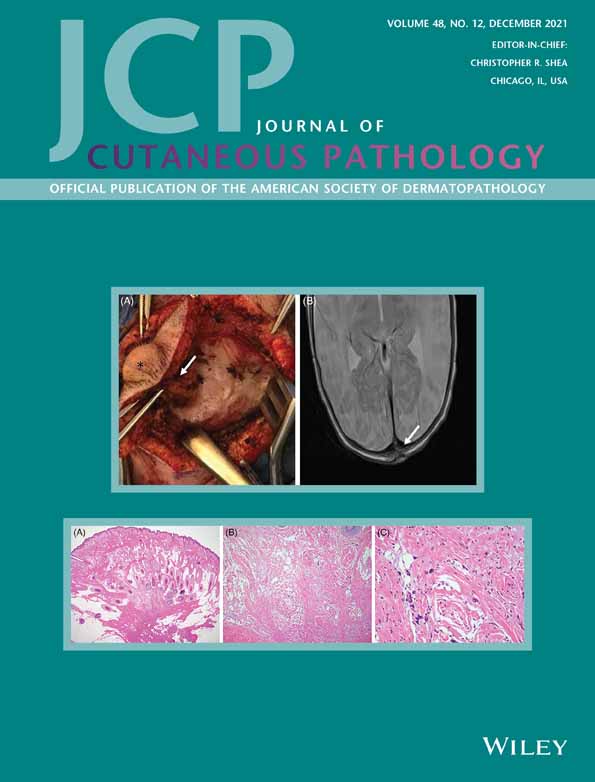Epidermotropic metastasis of squamous cell carcinoma of the tonsil: A case report with molecular confirmation
Abstract
Metastasis of oropharyngeal squamous cell carcinoma (SCC) to skin is uncommon and portends a poor prognosis. Clinical history and histopathology are key to discerning between metastatic disease vs de novo SCC of the skin. We describe a case of an HPV+ tonsillar SCC in a 77-year-old male, with metastasis to the neck skin. This case is unique because of prominent in situ epidermal involvement on skin biopsy specimen, complicating the distinction between primary and secondary disease. The nature of the lesion was resolved using next-generation sequencing of both the primary oropharyngeal SCC and skin lesion biopsy specimens. Both tumors showed identical ATR D1639G somatic mutations, while the skin lesion contained an additional POLE F1366L mutation. Clonal evolution of metastatic lesions is a well-described phenomenon; comparing the genetic profiles of primary and metastatic specimens can be useful in evaluating the tumor origin as well as identifying targetable genetic aberrations.
Open Research
DATA AVAILABILITY STATEMENT
Data sharing is not applicable to this article as no new data were created or analyzed in this study.




